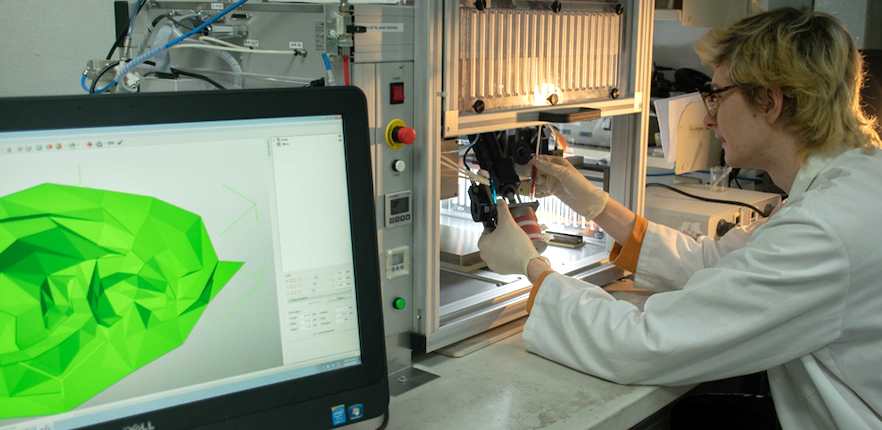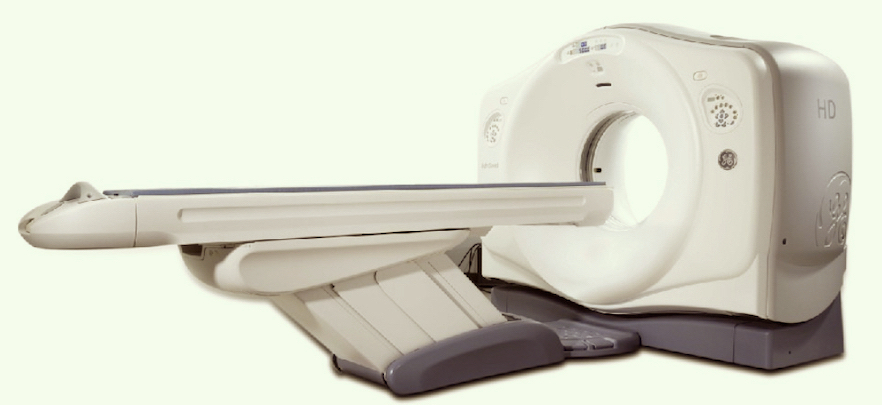The Centre for Bioengineering and Nanomedicine provides comprehensive expertise, capabilities and access to equipment for research and collaboration. Contact us for more information:
Email bioengineering@otago.ac.nz

The bioscaffolder system enables construction of complex scaffolds using hydrogel bioinks and biomaterials such as thermoplastics.
Imaging capabilities
Spectral molecular imaging
MARS spectral molecular imaging is a new 3D quantitative X-Ray colour imaging modality. The technology has the potential to advance diagnosis and treatment of major health diseases in new ways. The novel features of this scanner are an ability to differentiate and quantify simultaneously several targeted cell types, biomarkers, and drug delivery at the target tissue.
More about our imaging research
Point-of-care capabilities
Clinical capabilities include:
- BIS index monitorization
- Cardiopulmonary bypass
- GENESIS Environmental Chamber which is able to simulate a variety of extreme environmental conditions by altering temperature, humidity and altitude.
- Near-infrared spectroscopy for the body and brain
- Wireless and wearable eye tracking
- Ultrasound (transcranial, vascular, cardiac)
- Wireless ECG/EMG, and wireless EGG for electrogastrography
- Wireless physiological monitoring
- XR Headsets for Virtual Reality, Augmented Reality, and mixed reality systems.
More about our point-of-care technologies research
Regenerative medicine capabilities
3D Cell Assembly
Construct of a 3D cell environment allows us to create a more physiological relevant environment for the cells to grow, differentiate and produce extra cellular matrix components in the pathway to regenerative medicine.
Cell culture
Growing patient derived cells allows us to examine the biocompatibility and effect of various fabrication techniques and designs on relevant scaffolds for optimal cell survival and tissue formation. We also have a variety of primary human cells that can be used to fabricate physiologically relevant tissue models.
Fluorescence tagged cells
We are able to fluorescently tag cells for assessment of parameters such as viability, protein (Collagen, Aggrecan etc.) production as well as cell migration.
Microfluidics
Using Flow dynamics and a variety of cell types we can produce spheroids for organoid production as well as potential assembly into scaffolds.
Scaffold design
With a wide variety of 3D printing techniques and biomaterials available we are able to investigate scaffold designs for various tissue and material properties for cell signaling and biocompatibility.
Titanium implants
In connection with our industry partners, we look to optimize bone ingrowth in a variety of titanium implants as well as assessing the effects of coatings on cell interactions with the implant.
More about our regenerative medicine research
Equipment
Some of our equipment is available to hire for set bench fees. Contact us for more information:
Email bioengineering@otago.ac.nz
32 channel wireless EEG
A Hybrid Multichannel transcranial Direct Current Stimulator (tDCS).
Bioscaffolder
The system enables us to construct complex scaffolds using materials such as hydrogel bioinks and biomaterials such as thermoplastics also called biomaterial inks with a temperature controlled base plate as well as high and low temperature-controlled print heads. Additionally, custom built print heads have allowed for bio assembly features to be integrated into this machine.
Form Labs
This printer enables us to produce prototypes and customise designed devices for research purposes such as parts for microfluidics and bioreactor setups as well as anatomical model for teaching and learning as well as customized devices and implant designs. With a range of available resin materials, the type of device can be durably used in the lab and for educational purposes.
GE LightSpeed CT750 HD

An X-Ray CT scanner capable of high-speed head and whole-body high definition imaging. The high definition image quality enables detailed visualisation of anatomical details in human and animal bodies for diagnostic studies at a reduced radiation dose.
Hand Avatar
Infrared non-contact muscle function monitorization. This avatar app uses 3D technology to mimic the user's hand and finger movements onto a laptop screen. Muscle activation of the hand is translated to a laptop image and shows which muscles are related to the movement. Labels on the image name the muscles and tendons used to create the movement.
LumenX
This bioprinter is used for high-speed light based bioprinting using a range of hydrogel biomaterials that can be cell-laden or cell-free. With high precision and resolution, this system enables us to create fine detailed designs by altering multiple printing parameters in a short amount of time.
Mechanical Testing System (MTS)
This system enables us to assess mechanical properties in tension compression for a wide range of biomaterials from soft hydrogels to metallic implants. Additionally, custom testing rigs can be designed for a variety of push or pull out testing of implant to tissue integration.
Regen HU
This system has multiple print heads that enables us to print with a variety of techniques (extrusion, melt electrowriting, etc.) as well as materials (bioinks, hydrogels, thermoplastics, etc.) in the same scaffold in an integrated manner. This is particularly important in matching the complexity of native tissues within engineered tissue constructs.
Rheometer
This equipment is used to the determine the flow properties of biomaterials. Additionally, the option of photo-rheology is possible to determine kinetics of light-initiated crosslinking on photo-crosslinkable biomaterials.
Further equipment
- 8 channel tDCS
- DXA scanner
- fMRI compatible Olfactometer
- Multichannel wearable hybrid direct & alternative current neurostimulators
- Mobile phones and tablets for mHealth applications
- Non-contact Haptic stimulator
- Non-invasive peripheral Nerve stimulators (TENS, PENS)
- taVNSfFor transauricular Vagal Nerve Stimulator.
- Ultrasound
- Whole body room calorimeter